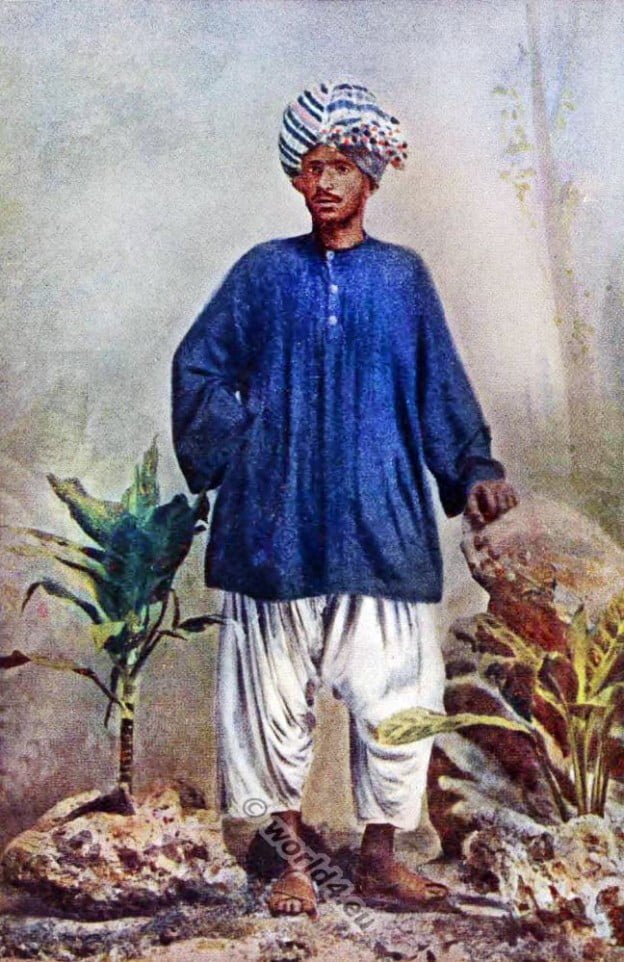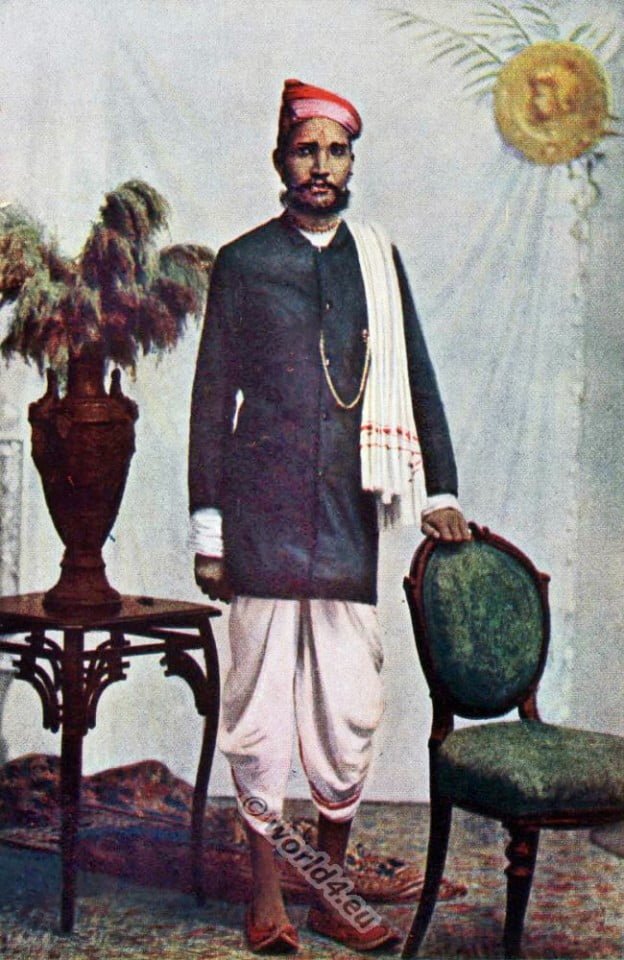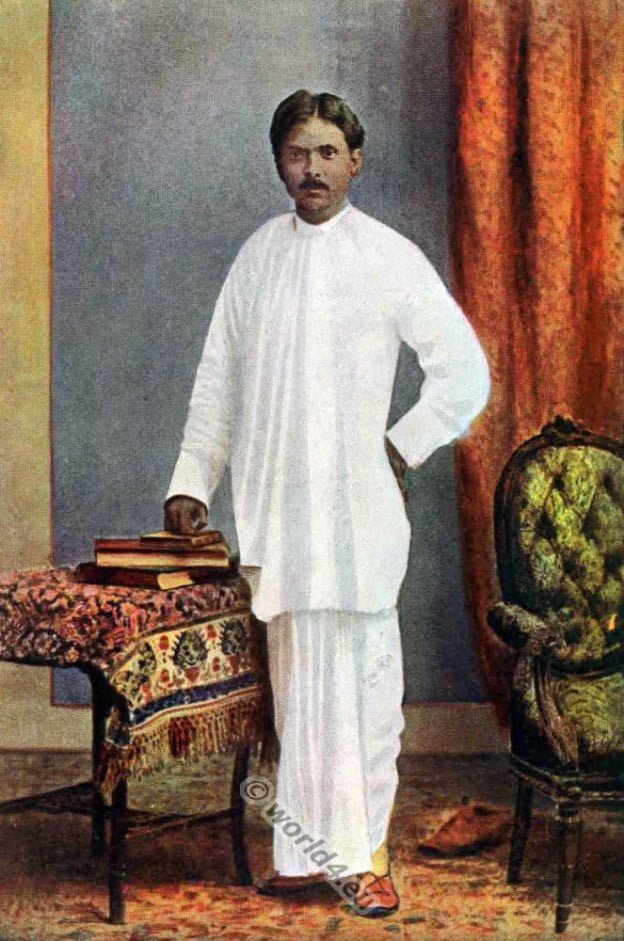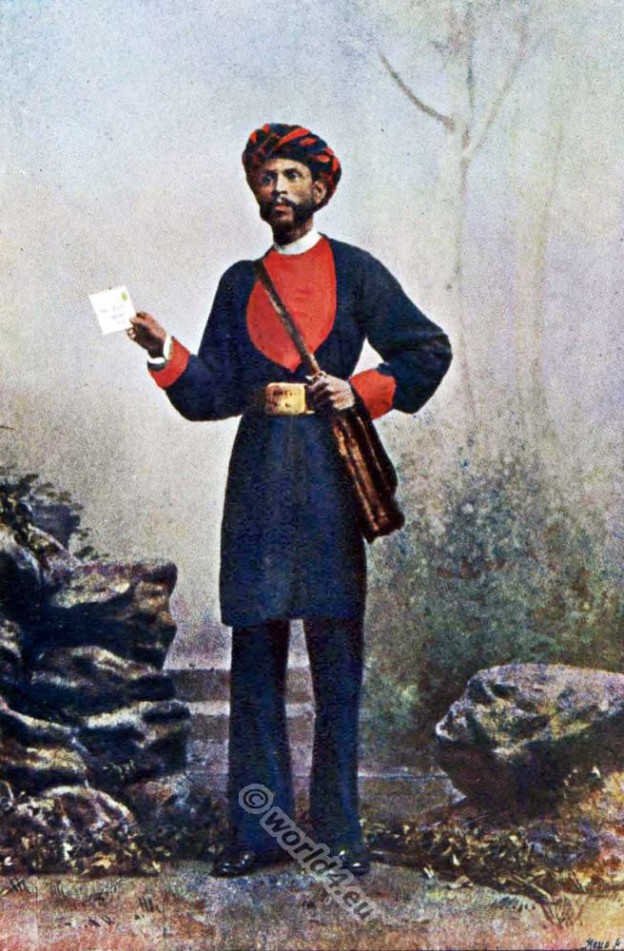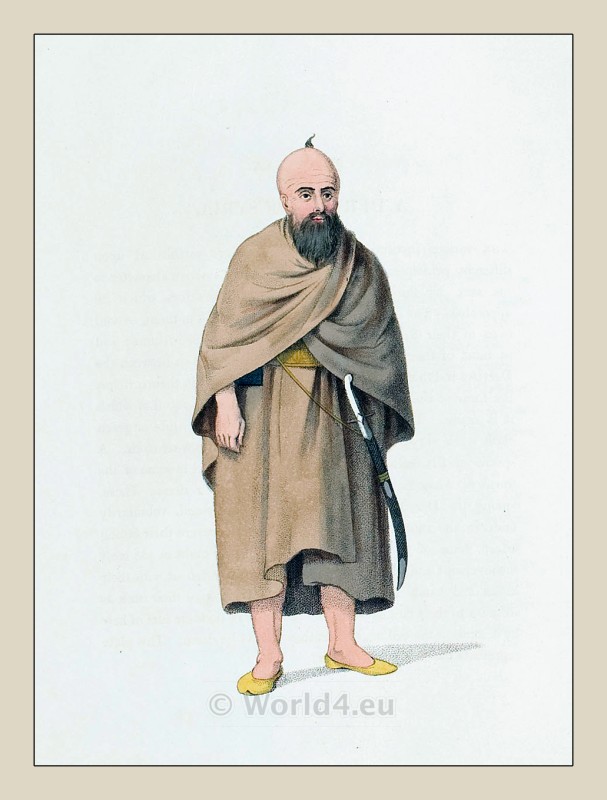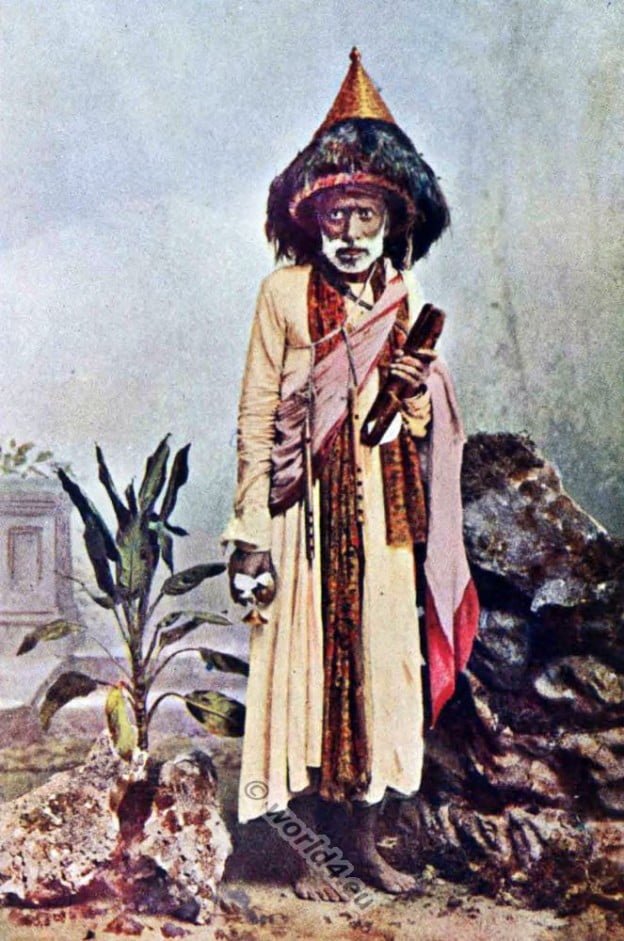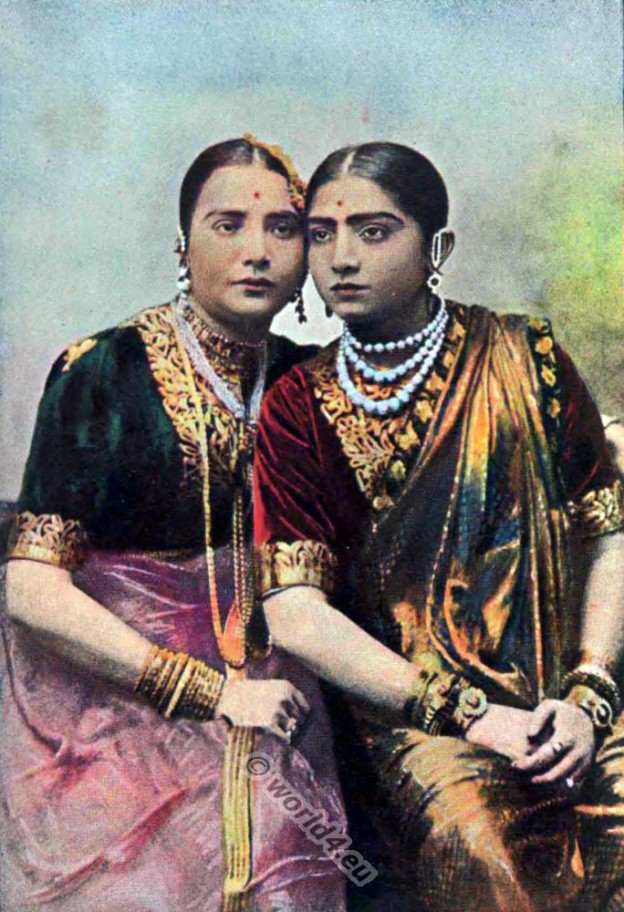A man from Kabul. The accompanying picture represents a native of Kabul, and the dress is typical of that worn by most Afghans. Those who visit the larger Indian towns… Read More
Category: Asia
Costume and fashion history of Asia. Manners and Customs. Collected from rare sources.
The Marwari or Marwadi. Indian Rajasthan character.
The Marwadi are an Indian ethnic group that originate from the Rajasthan Jodhpur region of India
The Bengali. Indian Native.
The Bengali derives his name from the province in which he is born.
The Indian Postman, the Dak-Wallah.
The Indian Postman
A Mohammedan. Indian Characters.
Mohammedan dressed In the full costume worn by Muslims from the North-West Provinces.
A Janissary officer. Ottoman empire infantry.
The Muslim soldiers are divided into two classes: the Spahis, or cavalry, and the Janissaries, or infantry.
A dervish of Syria. Each order has its particular costume.
THE various institutions of the Dervishes (Sufi) are established upon different principles. Each founder gave a distinctive character to his sect, by the statues, regulations, and practices, which he appointed.
Wasudev Beggar. India Jaggi Vasudev. Indian Sadhguru
Wasudev Beggar. India Jaggi Vasudev There are beggars and beggars, from the Hindu ascetic, who, after renouncing the lusts of the flesh, wanders from shrine to shrine, and meditates upon… Read More
The Snake Charmer. Indian Characters.
The Snake Charmer. Indian Characters. Although the so-called” snake-charmer” is usually a sharp-witted and ofttimes a clever fellow, it is his conjuring which forms his chief claim to attention. True,… Read More
The Nautch girls. Indian dancers.
On special occasions, such as weddings or parties given in honor of a distinguished visitor, it is the correct thing in native society to give a „nautch,“ or dance.

